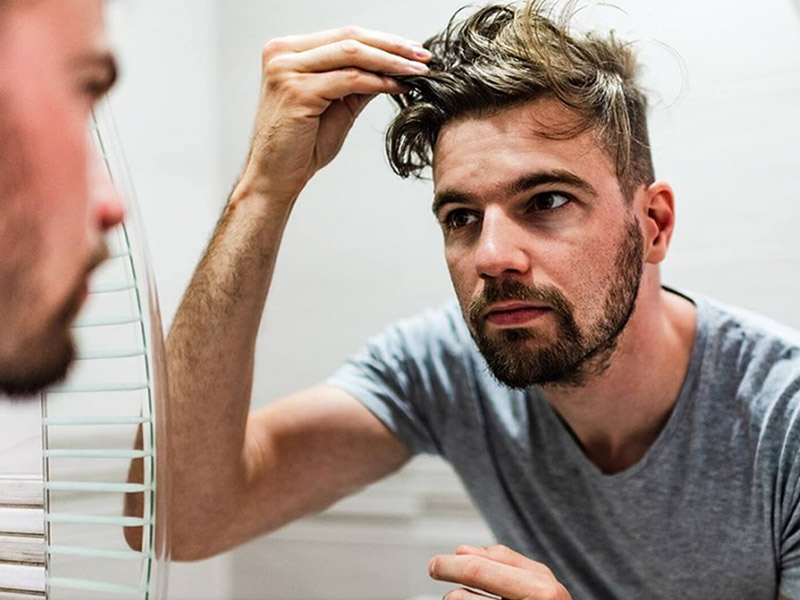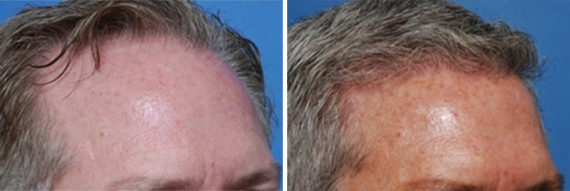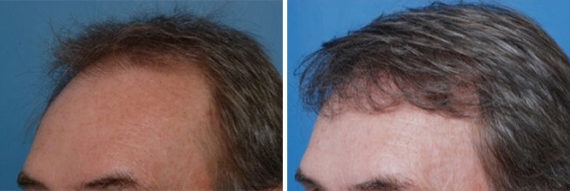Benefits and Beauty Through Hair Transplant
Discover hair transplantation’s benefits, like natural hair regrowth with FUT and FUE techniques, through a doctor’s consultation.
Our Achievements
Hair Transplant Explained
Hair transplantation is a procedure that restores hair in balding patients. It involves relocating hair follicles from a donor area, typically a horseshoe-shaped region in the back of the head, to the bald areas. The principle is simple: the transplanted follicles should behave as they did originally, resulting in successful hair growth.
To achieve natural and undetectable results, precision in placing the hair at the right angle and in the appropriate location is crucial. The positioning of the hairline also plays a key role in creating a natural appearance. Surgeons must consider potential future hair loss when planning the procedure to ensure lasting success. This approach is especially effective in men who are experiencing significant appearance changes due to balding, as it can transform their look and boost their confidence, much like cosmetic surgery can.

Hair Transplant Techniques
To address pattern baldness, two primary techniques are employed for follicular unit grafting: Follicular Unit Transplant (FUT) and Follicular Unit Extraction (FUE).
With follicular unit micrografting, hair is taken from the less prone-to-balding area at the back of the head and transplanted to the balding regions around the hairline and top of the head. Each graft contains up to four hairs with their roots (follicles). Surgeons use single-hair grafts to establish natural hairlines, followed by grafts of two, three, and four hairs behind them.
Follicular Unit Transplant (FUT) Technique
In a typical FUT procedure, a strip of hair is taken from the back of the head, extending from one ear to the other. Sutures close the incision, removed in nine to 10 days. This strip is meticulously dissected under magnification to create smaller grafts of one to four hairs each. These grafts are then transplanted into thinning or balding areas on the top of the head. A substantial number of these small grafts can be transplanted within a short time, about five hours, to minimize graft exposure. The incision often heals as a fine line, hidden by surrounding hair, though shaved heads may reveal a minor scar.
Follicular Unit Extraction (FUE) Technique
FUE involves individually extracting follicular unit grafts from the back of the head without a linear incision. Instead of a linear scar, FUE leaves multiple small, round, white scars after graft harvesting. While effective, FUE typically takes longer, about five to eight hours on average, and yields fewer grafts. Dr. Dudas and Dr. Agarwal offer FUE without automated suction-based devices, using sharp titanium punches powered by an instrument, which he believes is gentler on hair follicles.
CALL TODAY TO SCHEDULE YOUR CONSULTATION
Hair Transplant Best Candidates
Hair restoration is suitable for those with male or female pattern baldness. Ideal candidates should possess a natural hairline with sufficient hair density, good overall health, and healthy hair growth. Experienced surgeons tailor the procedure to individual goals. Recovery precedes full results. Medical treatment with finasteride and minoxidil are commonly recommended to enhance results and preserve existing native hairs. Consult an experienced surgeon for options and risk details if seeking fuller hair in balding areas.
FUE hair restoration by Dr. Anurag Agarwal
Hair Transplantation in Naples Florida
Preparing for a Hair Transplant
Choosing between FUT and FUE is a vital discussion with your board-certified surgeons, Dr. Dudas, Dr. Agarwal and Dr. Holmes, who boast experience and skill in crafting natural-looking hairlines. Beware of “scarless” procedures that sound impractical.
For severe baldness, scalp reduction with hair grafts may be necessary, individually tailored to each patient. Aesthetic Surgery Center regards hair replacement as an art, with Dr. Dudas’s and Dr. Agarwal’s expertise in microsurgery providing undetectable results.
Your Initial Hair Transplant Consultation
Meet Dr. Dudas, Dr. Agarwal or Dr. Holmes privately to discuss your concerns, hair loss history, and expectations. Your surgeon will assess your hair and recommend the best approach, whether medical or surgical, such as FUT or FUE. Our patient coordinator will explain costs and scheduling.

Hair Transplants Before & After Photos
* Each patient is unique and individual results may vary.
The Day of Your Procedure
Arrive an hour early, receive an oral sedative, and have your scalp marked. Local anesthesia is applied for donor hair extraction, with sutures for FUT or shaving for FUE. Then, microscopic follicular unit grafting begins, ensuring minimal trauma. You’ll wear a light headband-like bandage and return home.
After Your Hair Transplant
The day after, you’ll visit for a check-up. Your dressing will be removed, and you’ll start a daily hair care routine. Stitches from FUT are removed after nine or ten days, and any graft site crusting should vanish within two weeks.
Hair Transplant Aftercare
After undergoing a hair transplant procedure, it is important to adhere to aftercare instructions given by your doctor to ensure optimal results. This includes keeping the scalp clean and dry, avoiding activities that could cause the transplanted hairs to be disturbed or pulled out, and refraining from using any products or medications that could potentially interfere with healing. Aftercare also includes regularly spraying the grafts to keep them moist and minimize crusting, and avoiding direct sun exposure for at least three weeks. Your surgeon may also recommend taking supplements such as biotin and other vitamins to promote healthy hair growth and maintenance.
While the majority of hair loss stems from genetic sources, other factors can contribute to the problem, such as stress, poor nutrition, and certain kinds of illness.
Hair Transplant Cost
Hair transplant costs in Naples, FL, can range from $15,000 to $25,000, depending on the complexity of the procedure and the number of grafts needed. Generally speaking, Follicular Unit Extraction (FUE) hair transplants are more expensive than other forms of hair restoration treatments due to their labor-intensive process. However, FUE transplants produce natural-looking results with minimal scarring. Your doctor will be able to give you an accurate estimate for your treatment after they examine your scalp and discuss your desired results.
What to Expect in the Years After Your Procedure
A truly well-performed hair transplantation procedure will create lifelong changes for your hairline and hair density. Finasteride and Minoxidil are the top non-surgical recommendations made by Dr. Dudas, Dr. Agarwal or Dr. Holmes to their male patients because of the ability to slow the future loss of native hairs and potentially grow new hairs. Men and women can benefit from topical minoxidil to slow this process as well. However, as hair loss does continue, Dr. Dudas, Dr. Agarwal and Dr. Holmes are proud to follow their patients for the long term and help them to combat their distressing hair loss problem.
Book an appointment with Dr. Dudas, Dr. Agarwal, or Dr. Holmes by contacting the Aesthetic Surgery Center, located at 1175 Creekside Parkway #100 in Naples, FL, by calling (239) 594-9100.
Related Procedures: Rhinoplasty, Revision Rhinoplasty, The UpLift Facelift, Endoscopic Mid Facelift Surgery, Eyelid Surgery, Eyebrow Transplant, Chin & Cheek Surgery, Skin Cancer Reconstruction, Hair Transplant Surgery, Surgery of the Ears, Fat Transfer (Fat Grafting), Lip Augmentation, Endoscopic Eyebrow Lift, Scar Revision, Facial Hair Transplants, Eyebrow Hair Transplants
Why choose Aesthetic Surgery Center
Dr. Anurag Agarwal, M.D., F.A.C.S.
- Double board-certified facial plastic surgeon by the American Board of Facial Plastic and Reconstructive Surgery and the American Board of Otolaryngology – Head and Neck Surgery.
- Oral examiner and Board of Directors for the American Board of Facial Plastic and Reconstructive Surgery
- Former President of the Florida Society of Facial Plastic and Reconstructive Surgery
- Received his Doctor of Medicine at Philadelphia’s MCP-Hahnemann School of Medicine in 1999 and was elected to the Alpha Omega Alpha Honor Society.
- In 2016, Dr. Agarwal was honored at the annual American Academy of Facial Plastic and Reconstructive Surgery national meeting.
- Board-certified plastic surgeon by the American Board of Plastic Surgery.
- Attended medical school at UNMC (University of Nebraska Medical College).
- Was elected to the Alpha Omega Alpha Honor Society.
- Member of The Aesthetic Society, the Florida Medical Association, and Collier County Medical Society.
- General surgery residency at Loyola University Medical Center in Maywood, IL
- Plastic surgery residency at Cleveland Clinic Florida











